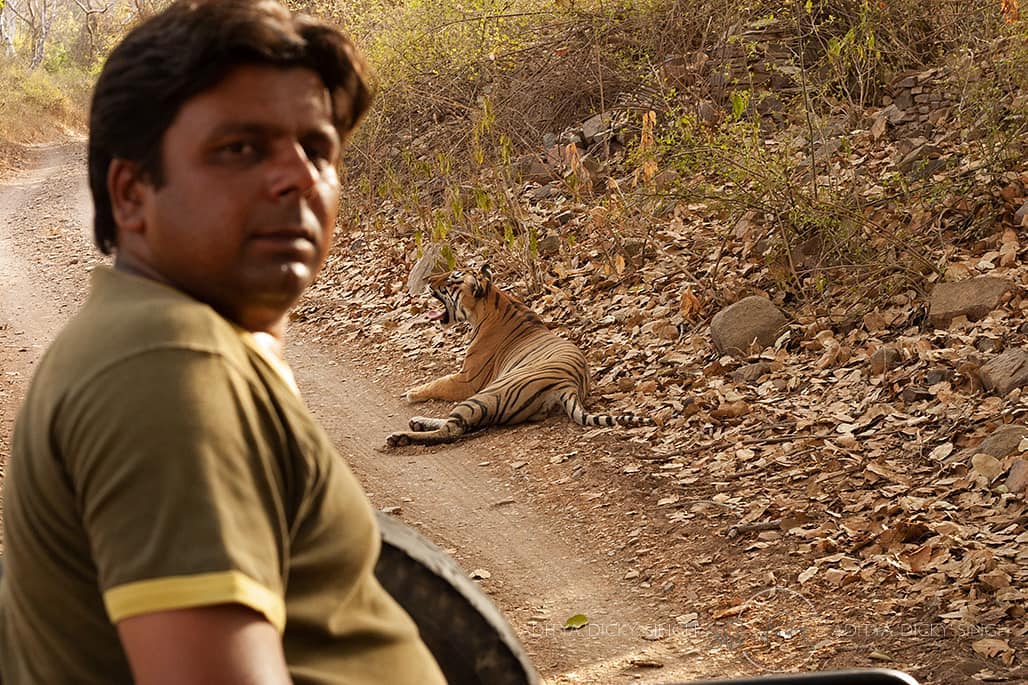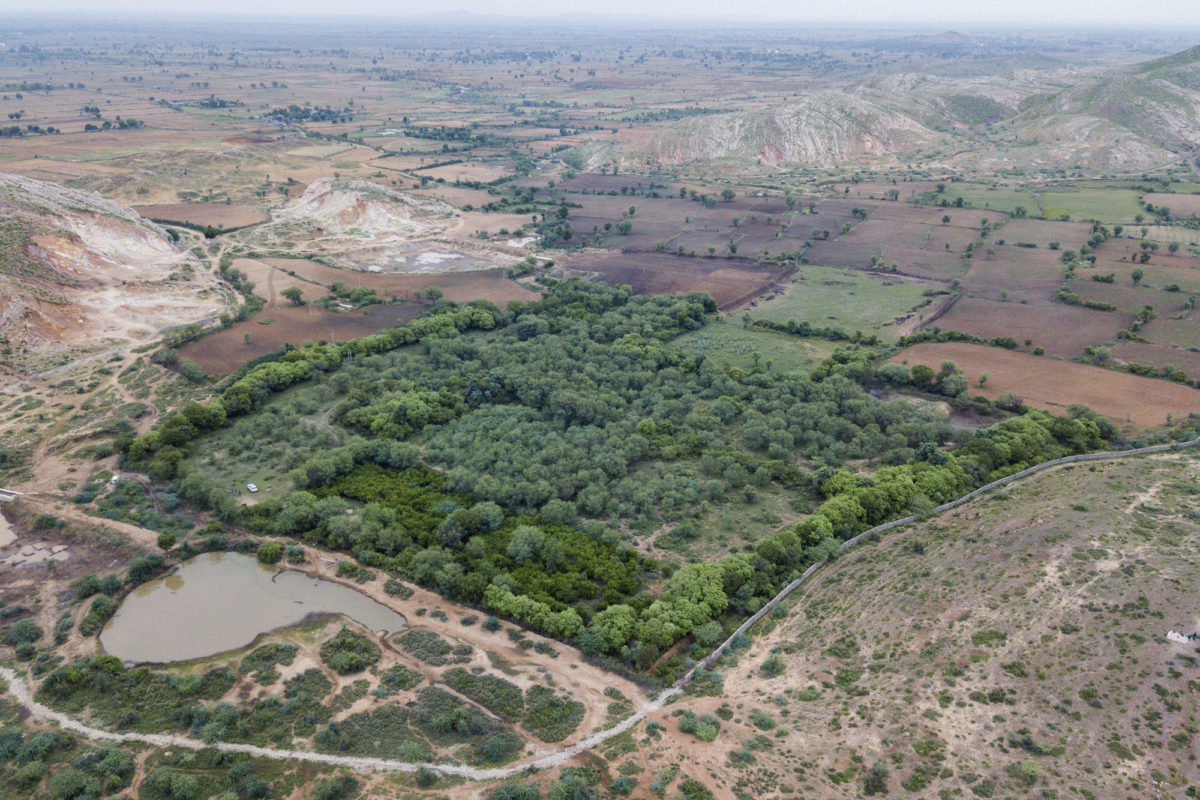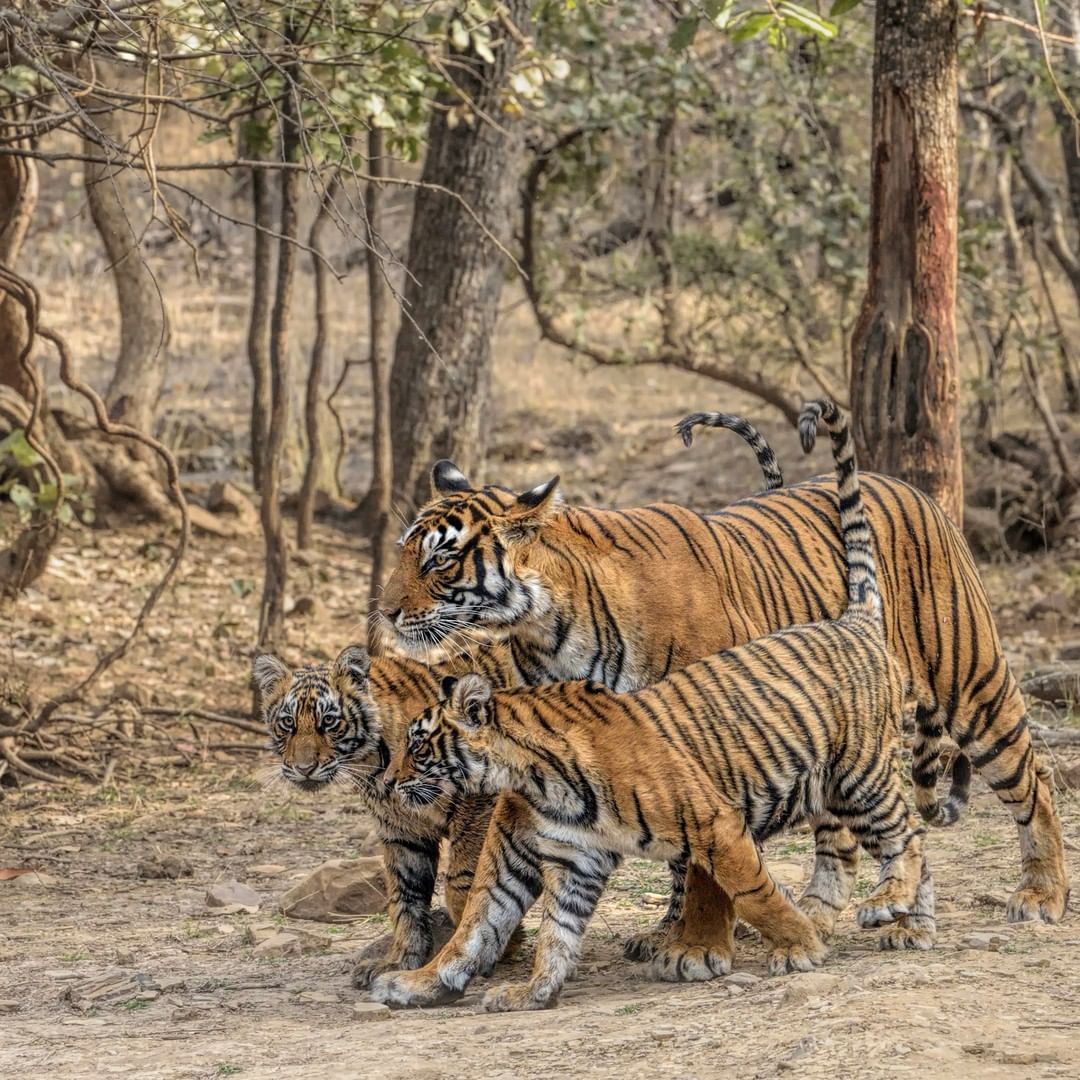- Good Stuff -
- 7mins -
- 914 views
An Indian couple have been buying land next to a tiger reserve to let the forest spread and thrive
Over the past 20 years, Aditya and Poonam Singh have been buying up land, allowing the neighbouring tiger reserve to expand and remain untouched by new developments. Today, the area has become a lush green forest where tigers, leopards, and wild boars roam free.
Photographer buys land and lets it grow wild, attracting tigers and other animals
Photographer Aditya “Dicky” Singh quit his comfortable civil service job, left Delhi with his wife Poonam, and moved to Sawai Madhopur city in Rajasthan just outside Ranthambore Tiger Reserve, to be closer to nature. Over the last 20 years, the Singhs have bought around 35 acres (15 hectares) of land worth over Rs 10 million (€117,160/$134,426/£102,290), which shares its boundary with Ranthambore tiger reserve, and have subsequently left the land completely undisturbed. — The landholding is now a lush green forest patch that is frequented by a variety of wild animals, including tigers, throughout the year. Singh has been approached by serious buyers for his land on numerous occasions, but his love for nature and wildlife is more important to him than money. Instead, he has inspired many others who own land around his to follow suit and yet more across India who want to emulate the same model.

“It was a dream that we both saw an achieved together to have our own area of wilderness,”
It was Aditya “Dicky” Singh’s love for nature and wildlife that led him to quit his cushy Indian civil service job, leave his comfortable house in Delhi and settle with his wife Poonam in a remote corner of Rajasthan, right next door to the famous Ranthambore Tiger Reserve, in 1998. Over the last 20 years, Singh has been buying tracts of land adjacent to Ranthambore and simply letting the forest grow back.
After relocating to Sawai Madhopur, a small city near Ranthambore Tiger Reserve (RTR), Singh took up photography. He and Poonam opened a tourist resort there to earn their living. Unlike many tourism establishments who want unrestricted access into the wild areas, the Singhs slowly began buying parcels of land adjacent to each other just outside the RTR’s boundary.
“The area is called Bhadlav. I had first gone to this area soon after settling in Ranthambore, along with a BBC filmmaker. This area adjacent to the boundary of the Ranthambore reserve was visited by predators like tigers who used to come for prey. As a result, farmers were selling their land,” Singh told Mongabay-India.
Poonam remembers how it was love at first sight for her when she visited Ranthambore with Aditya. “My first sighting was a tigress with three cubs on a hill. It was magical. At the end of the trip, I just asked him if we can move to Ranthambore. He wanted it too and within months we moved. As far as this land is concerned, it was a dream that we both saw an achieved together to have our own area of wilderness,” she told Mongabay. Poonam, an artist by profession, managed the resort with Aditya for twenty years until they closed it down in 2019.
They now own about 35 acres of land in Bhadlav, another five acres a few hundred metres away and a strip of land connecting the two.
Source: Mongabay-India

“Money was never the consideration. It is just about my love for nature and wildlife,”
“I just bought this and did nothing to it except removing the invasive species. We allowed the land to recover and now after 20 years it has become a lush green patch of forest which is frequently visited by all kind of animals, including tigers, leopards and wild boars, throughout the year,” Singh told visiting Mongabay-India staff writer, Mayank Aggarwal.
In an aerial shot he had captured, Singh points to their land parcel — a lush green expanse compared to the barren land of the Ranthambore tiger reserve with which his landholding shares the boundary. He has also created several water holes in the landholding to ensure that the wild animals get water even during summers.
As a result, the pressure of predators like tigers from the RTR venturing into fields of farmers has gone down. “It is simply because the animals understand that in this patch of the forest they get prey, water and safe shelter without any disturbance,” said Singh.
At present, India has 50 tiger reserves. Ranthambore is among the country’s biggest and most famous tiger reserves, with an estimated population of about 60 tigers.
During a freewheeling conversation with Mongabay-India, Singh admitted that he is often subjected to questions for not carrying out any project on his land which is now well worth over Rs. 10 million (Rs. one crore) despite getting so many proposals.
“Money was never the consideration. It is just about my love for nature and wildlife. Instead, these days I am getting queries from people across India who want to replicate a similar model in their state,” he said.
The Singhs are not done with this dream. Aditya Singh says wants to buy more land adjacent to his fields, especially the agriculture field next to his land and inspire others in the area to follow suit.
The couple’s side project, a new home and homestay that’s in progress, is going to run on solar and wind power where too they are creating two small water holes on the fence of the house so that thirsty animals can get water during summers.
Source: Mongabay-India







More Tigers!
For hundreds more stunning photos of tigers check out Ranthambore | photo gallery | Instagram | Dicky Singh

